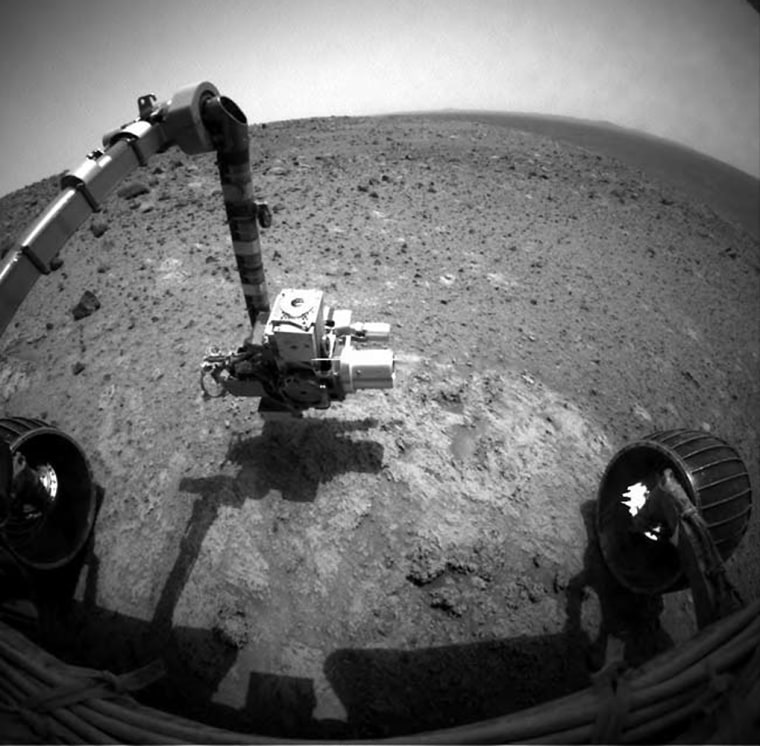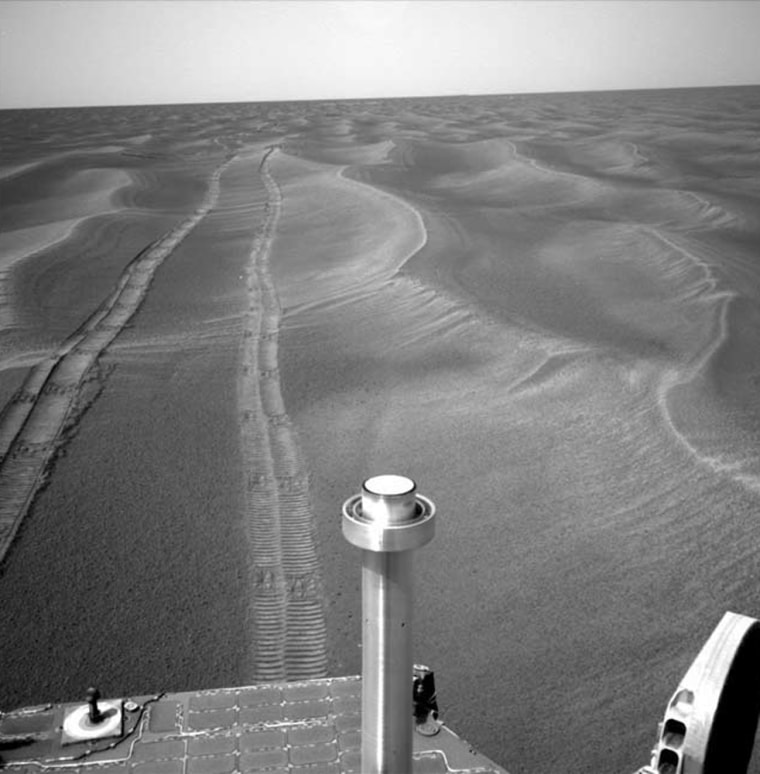NASA’s dual Mars rovers — Spirit and Opportunity — are wheeling about in their respective zones of exploration: Gusev Crater and Meridiani Planum.
The Opportunity Mars rover is headed north right now, but only for a little while, said Cornell University’s Steve Squyres, lead scientist on the Mars Exploration Rover program.
Scientists and engineers are delighted to see the golf cart-sized robot free to move about – after being ensnared in sand for some five weeks.
Now the robot is out of purgatory, quite literally, and making short runs within Meridiani Planum.
A little younger ... a little softer
”We think we’ve got a few clues about what made Purgatory Dune different from the ones we drove over before we hit it. It’s a little taller than the dunes that came before it, and a little steeper, Squyres told Space.com. “We also have a hunch that the dunes that run from northwest to southeast, like Purgatory does, may be a little younger and a little softer than the ones that run north-south,” he explained.
Squyres said rover operators on Earth are now driving Opportunity to the north, but only for a short distance. From that vantage point, scientists and engineers will take a careful look around, south and east and west, to find the southward path that has the fewest Purgatory-like obstacles.
“Once we’ve found our preferred path, we’re going to turn south again and drive, very carefully, back into the thick of it,” Squyres said.
Squyres advised not to expect over 650 feet (200 meter) rover drives anytime soon. “We'll have our safety checks turned on, and that’ll make for slower going.”
But the goal now is, Squyres said, what the goal was three months ago: Erebus Crater.
In his rover update on a Cornell University rover Web site, Squyres said that instruments on Opportunity’s robot arm have been used to study dune dynamics. The hope is to avoid running into another Purgatory Dune.
Following drives to the north first — away from Erebus — there will be “long hard push south” toward that large crater and its attraction of geological features.
Holiday driving
For the Spirit rover, on the other side of Mars, science work high in the Columbia Hills -- within Gusev Crater -- has been going extremely well.

Last weekend, the robot stopped to look at an outcrop on the west side of “Husband Hill”. All the target names under study were themed to “4th of July”, said Larry Cumpler at the New Mexico Museum of Natural History and Science in Albuquerque. He is on the Mars rover science team.
Spirit’s instrumented robot arm surveyed an outcrop named “Independence”, while a specific target for science study was dubbed “Franklin”. Other targets include some of the other signers of the Declaration of Independence ... and other spots were named after various types of fireworks, Crumpler told Space.com.
This week, the hope of Spirit operators is to steer the rover to ever-higher elevations.
Squyres said the Spirit team is a little puzzled why the rover is barely leaving tracks. The ground is hard, he noted on the Cornell rover web site.
“It makes for great traction and great climbing. I’m still not confident that we’ll make it to the summit, since the images seem to show a transition to softer ground with more loose rocks ahead. But we’re enjoying the conditions while we’ve got them,” Squyres reported.
